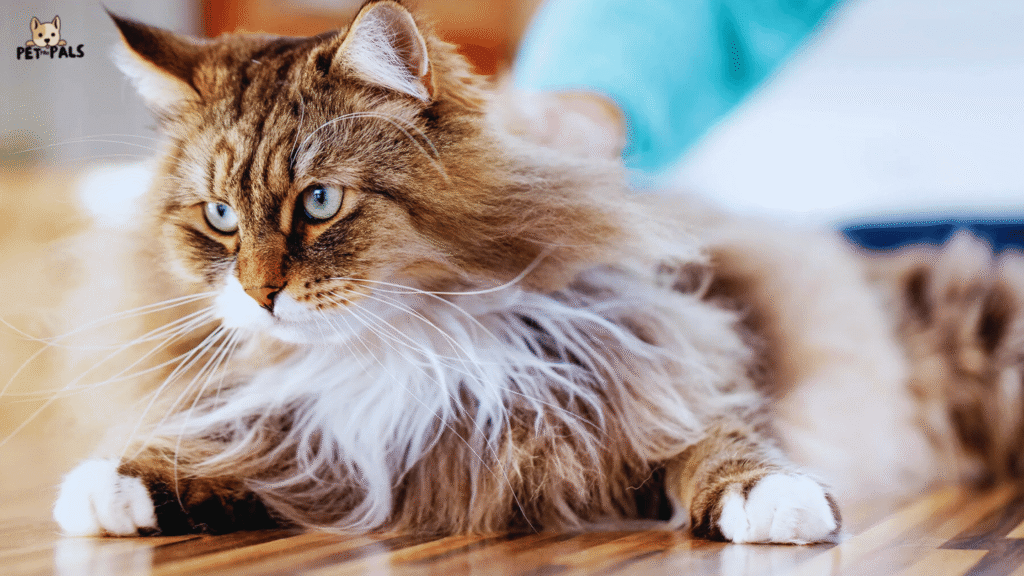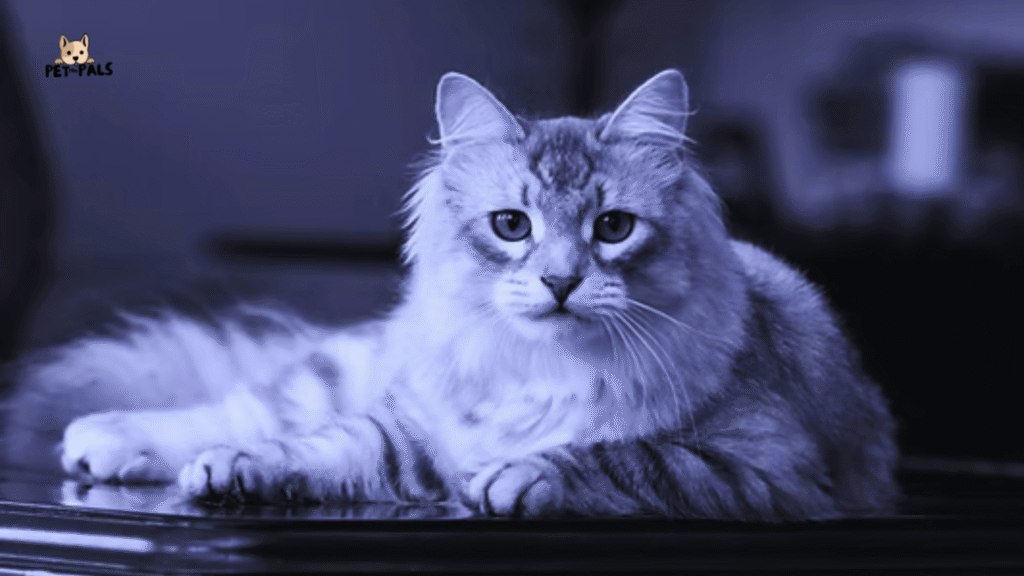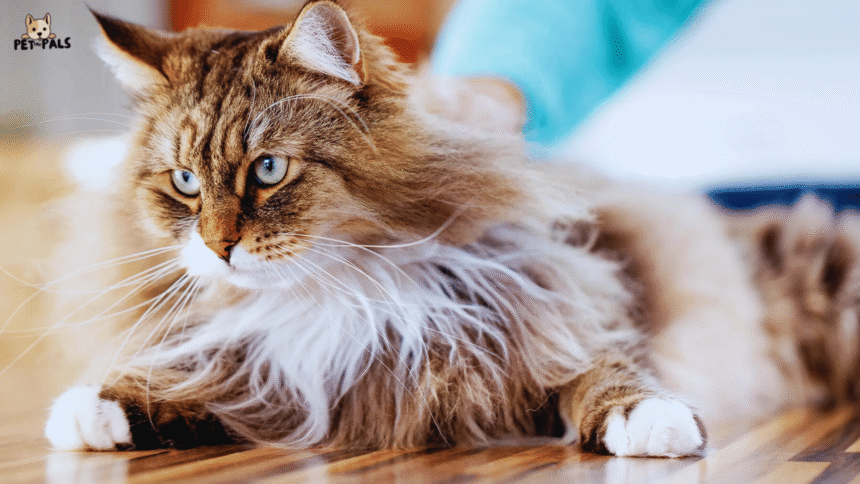Siberian cats are truly majestic creatures, known for their thick, luxurious coats and striking appearance. Originating from the cold forests of Russia, these cats have adapted to harsh climates, making them strong, agile, and resilient pets.
One of the most remarkable features of Siberian cats is their reputation as a hypoallergenic breed, often suitable for allergy sufferers seeking a feline companion.
According to a 2019 study published in the Journal of Allergy and Clinical Immunology, Siberians produce lower levels of the allergenic protein Fel d 1 compared to other cats.
Beyond their hypoallergenic reputation, Siberians are known for their playful energy, intelligence, and affectionate nature, earning them the nickname “gentle giants” among cat lovers.
In this article, you’ll discover everything you need to know about Siberian cats, from the costs involved in bringing one home to their unique care requirements and what makes their temperament so special. Whether you’re a seasoned cat lover or considering your first pet, this guide will help you understand why Siberians are so adored.
History & Origins of Siberian Cats

The Siberian cat is a natural breed that traces its roots back hundreds of years to the dense forests and harsh climates of Siberia, Russia. Unlike many modern cat breeds developed through selective breeding, Siberians evolved naturally, adapting over generations to survive brutal winters with their thick triple-layered coats and sturdy builds. Ancient Russian folklore even celebrated these cats as magical creatures, believed to bring good luck and protect homes from evil spirits.
First documented in the 16th century, Siberian cats were cherished for their hunting prowess and resilience. It wasn’t until the late 20th century that they gained international recognition, particularly after Soviet cat breeders began exporting them to Europe and North America in the 1980s.
Today, Siberians are admired worldwide for their robust health, hypoallergenic qualities, and loving temperament, making them one of the most treasured natural cat breeds.
Why Are Siberian Cats So Expensive?
Siberian cats’ price tag often surprises many prospective pet owners, and several factors contribute to their premium cost. First, breeding Siberians outside their native Russia presents unique challenges.
These cats have a slower reproduction cycle compared to some other breeds, and responsible breeders must carefully manage genetic diversity to maintain the breed’s natural health and characteristics.
Because Siberians are relatively rare globally, especially outside Russia and Eastern Europe, finding quality kittens can be difficult.
Health screenings and lineage importance.
Another key factor driving up the cost is the extensive health screenings and pedigree verification that reputable breeders perform.
To ensure the kittens are free from hereditary diseases and have strong lineage traits, breeders invest in genetic testing and regular veterinary care. This careful attention helps preserve the breed’s renowned robust health but adds to the overall price.
Demand vs supply dynamics.
Finally, supply and demand dynamics play a significant role. The growing popularity of Siberian cats, thanks to their hypoallergenic nature and affectionate personalities, has created high demand, while the limited availability keeps prices elevated. This combination of breeding complexity, health assurance, and rarity makes Siberians one of the more expensive cat breeds to own.
Siberian Cat Personality
Siberian cats are known for their perfect balance of affection and independence. They love to be near their humans and form strong bonds, but aren’t overly clingy or demanding. This means they’ll happily follow you around and snuggle up for a cuddle session, yet they also appreciate their alone time to explore and play.
Playfulness and Intelligence
Playfulness is a defining trait of Siberians. They’re highly intelligent and curious, often engaging in games that challenge their minds, like puzzle feeders or interactive toys. Their playful nature stays well into adulthood, making them entertaining companions for families and individuals alike.
How Siberian Cats Show Affection
When it comes to showing affection, Siberian cats have a gentle, loyal way of expressing their love. They may greet you at the door, softly purr while sitting on your lap, or give you gentle head-butts as a sign of trust. Many Siberians enjoy being petted and will often “knead” with their paws when content.
Do Siberian Cats Like to be Held?
But do Siberian cats like to be held? Generally, they prefer to be near you rather than confined in your arms for long periods. While some may enjoy brief cuddling sessions, most appreciate having the freedom to move around. This balance of closeness and independence makes them ideal pets for those who want affectionate but self-sufficient feline friends.
Caring for Your Siberian Cat
Siberian cats boast a luxurious triple-layered coat designed to protect them from harsh winters, but this also means their grooming needs require some attention. To keep their fur healthy and free of mats, regular brushing is essential, aiming for at least two to three times a week.
During seasonal shedding, daily brushing helps manage loose hair and reduces hairballs. Despite their thick coat, Siberians generally don’t require frequent baths; occasional baths every few months or as needed will keep their coat clean without stripping natural oils.
Diet and Nutrition Tips
When it comes to diet, Siberians thrive on high-quality, protein-rich food that supports their active lifestyle. Balanced nutrition with adequate vitamins and minerals is key to maintaining their muscular build and overall health. Many owners find a mix of wet and dry food works best, but always consult your vet to tailor the diet to your cat’s age, weight, and health conditions.
Common Health Issues and Lifespan
Fortunately, Siberian cats are known for their robust health and longevity, often living 12 to 15 years or more with proper care. However, like all breeds, they can be prone to some genetic conditions such as hypertrophic cardiomyopathy (HCM) and hip dysplasia. Regular veterinary check-ups and health screenings are vital to catch any early signs and keep your feline friend thriving for years to come.
Siberian Cats as Indoor Pets: Are They a Good Fit?
Siberian cats are wonderfully suited to indoor living thanks to their adaptable and balanced personalities. While they are independent and enjoy exploring their environment on their terms, they also crave regular playtime and interaction to keep their active minds and bodies stimulated. Providing plenty of toys, climbing spaces, and interactive play helps meet their energy needs without overwhelming their independent streak.
Calm or Energetic Behavior.
In terms of behavior, Siberians strike a lovely balance; they’re neither overly hyperactive nor sluggish. They have bursts of playful energy, followed by calm, affectionate moments where they’ll happily lounge by your side. This makes them excellent companions for families or individuals who want a lively but not overwhelming pet.
Are Siberian Cats Destructive?
When it comes to being destructive, Siberian cats are generally well-behaved indoors. Their natural curiosity and intelligence mean they prefer exploring and problem-solving over destructive behavior. However, like all cats, they may scratch furniture if they don’t have appropriate outlets, like scratching posts. Early training and providing proper enrichment usually keep unwanted behaviors in check.
Do They Meow a Lot?
As for vocalization, Siberians tend to be moderately talkative. They don’t meow excessively but will communicate with soft chirps, trills, or meows when they want attention or to express curiosity. Their vocal style is usually pleasant and expressive rather than loud or demanding.
Size and Growth: How Big Do Siberian Cats Get?
Siberian cats are one of the larger domesticated cat breeds, often impressing owners with their sturdy, muscular builds and fluffy coats. On average, a full-grown male Siberian cat weighs between 15 to 20 pounds (6.8 to 9 kg), while females are slightly smaller, typically ranging from 10 to 15 pounds (4.5 to 6.8 kg). Their strong bones and dense fur give them an even more robust appearance.
Growth Milestones
Siberians grow at a slower pace than many other breeds. While most cats reach full size by one year, Siberians can take up to 3 to 5 years to fully mature, especially in terms of muscle development and coat thickness. Here’s a rough timeline of their growth milestones:
- 0–6 months: Rapid growth stage; kittens are playful, energetic, and quickly developing coordination.
- 6–12 months: Growth slows slightly; their personality becomes more defined.
- 1–3 years: Steady physical and emotional development continues. They start filling out and developing their full coat.
- 3–5 years: Siberians reach full size and maturity, with a fully developed body and thick adult fur.
This slow and steady growth process makes them a breed that stays kitten-like in spirit for years, while gradually growing into a majestic and powerful feline.
Quirks and Intelligence: What Makes Siberian Cats Unique?

Siberian cats are full of personality and plenty of surprises. One of their most charming quirks is their fascination with water. Unlike most cats, many Siberians love dipping their paws into their water bowl or even joining you in the bathroom. Don’t be surprised if you find your Siberian curiously watching the sink or hopping into a dry tub just for fun!
They’re also incredibly agile and love to leap. Thanks to their strong legs and athleticism, they often perch on top of bookshelves or high furniture, surveying their domain like royalty. Their curiosity knows no bounds, and they’re always on the lookout for new things to explore or “hunt.”
Problem Solving Abilities
Intelligence is another standout trait. Siberians are quick learners and excellent problem-solvers. They can figure out how to open doors, drawers, or even solve puzzles. This mental sharpness makes them easy to train. Many Siberians learn tricks, come when called, or even play fetch. They thrive when mentally stimulated and enjoy interactive play that challenges their brain.
Are Siberian Cats High Maintenance?
But are they high maintenance? Surprisingly, not really. While their thick coat does require regular grooming, Siberians are generally healthy, independent, and low-drama cats. Their intelligence and adaptability make them relatively easy to care for, as long as you provide enough play, affection, and grooming to meet their needs.
All in all, it’s their mix of quirky habits, smarts, and affectionate loyalty that truly sets Siberians apart as one of the most unique cat breeds in the world.
Final Thoughts
Siberian cats are a captivating blend of beauty, brains, and affection. While they tend to be more expensive than other breeds, due to their rarity, careful breeding, and health screenings, the investment often pays off in the form of a healthy, long-living companion with a loving heart and playful energy.
Caring for a Siberian means committing to regular grooming, quality nutrition, and keeping them mentally and physically stimulated. But they’re not overly demanding and typically adapt well to indoor life. Their balanced personality, affectionate yet independent, playful yet calm, makes them a joy to have around.
So, who makes the ideal Siberian cat owner? These cats thrive in homes where they receive companionship, attention, and engagement. Whether you’re part of a family, a couple, or live alone, a Siberian can be a loyal and intelligent companion if you’re willing to meet their basic needs and offer them love.
Before getting a Siberian cat, consider adopting responsibly. Work with reputable breeders or rescue organizations that prioritize the health and well-being of their animals. Taking the time to do your research not only ensures a happier experience for you but also a better life for your cat.
If you’re ready for a cuddly, curious, and majestic feline friend, the Siberian cat just might be the perfect addition to your home.
FAQ About Siberian Cats
Are Siberian cats good for people with allergies?
Yes, Siberian cats are known to produce lower levels of the Fel d 1 protein, which is the main allergen found in cat saliva and dander. While no cat is 100% hypoallergenic, many allergy sufferers find they react less to Siberians.
Do Siberian cats like to be held and cuddled?
Most Siberian cats enjoy physical affection and don’t mind being held, especially if they’ve bonded well with their owner. They are affectionate without being overly clingy, a perfect balance for many pet owners.
Are Siberian cats hypoallergenic for everyone?
Not exactly. While Siberians produce lower levels of the Fel d 1 protein (the main cat allergen), people with severe allergies may still react. It’s best to spend time with a Siberian before adopting to test your sensitivity.
Can Siberian cats be left alone during the day?
Yes, they are quite independent and can handle being alone for a few hours. However, they still need daily interaction and stimulation, puzzle toys, window perches, or even another pet can help.
Do Siberian cats change coat colors with age?
Yes, Siberians can experience a coat color shift as they grow. Many kittens lighten or darken as they mature, especially colorpoint varieties.
How do you introduce a Siberian cat to other pets?
Start slow: use scent swapping (blankets), gradual visual introductions, and positive reinforcement. Siberians are friendly but need time to adjust, just like any other breed.
Are male or female Siberian cats more affectionate?
There’s no strict rule, but some owners find males to be more openly cuddly while females can be a bit more independent. However, individual personality matters more than gender.
Can Siberian cats live in hot climates?
Yes, they adapt surprisingly well to warmer environments despite their thick coat. Just ensure they have shade, water, and cool indoor spaces, especially in summer.
Do Siberian cats need special food?
Not necessarily, but a high-protein, grain-free diet works well for maintaining their coat and energy. Always consult a vet to tailor their diet to your cat’s needs.

